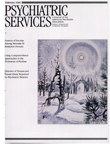A preliminary study of partial hospital management of severe obsessive- compulsive disorder
Abstract
OBJECTIVE: The study examined the effectiveness of a partial hospital treatment program combining behavioral therapy, medication, and psychosocial intervention for severe and treatment-resistant obsessive- compulsive disorder. METHODS: A total of 58 patients with a primary diagnosis of obsessive-compulsive disorder who underwent treatment in a partial hospital program were assessed at baseline, at program discharge, and at six-, 12-, and 18-month follow-ups. Obsessive- compulsive symptoms, depression, anxiety symptoms, and global functioning were rated. RESULTS: The majority of patients (71 percent) met the criterion for a successful outcome, which was a 25 percent decrease in score on the Yale-Brown Obsessive Compulsive Scale (YBOCS). Fifty-five percent finished the program with YBOCS scores of 16 or less, indicating only mild symptoms. Most of these patients sustained their improvement at six, 12, and 18 months after discharge, and many showed further improvement with continued outpatient management. CONCLUSIONS: The partial hospital treatment program for obsessive- compulsive disorder appears to be an effective intervention that should be implemented and investigated further.
Access content
To read the fulltext, please use one of the options below to sign in or purchase access.- Personal login
- Institutional Login
- Sign in via OpenAthens
- Register for access
-
Please login/register if you wish to pair your device and check access availability.
Not a subscriber?
PsychiatryOnline subscription options offer access to the DSM-5 library, books, journals, CME, and patient resources. This all-in-one virtual library provides psychiatrists and mental health professionals with key resources for diagnosis, treatment, research, and professional development.
Need more help? PsychiatryOnline Customer Service may be reached by emailing [email protected] or by calling 800-368-5777 (in the U.S.) or 703-907-7322 (outside the U.S.).



